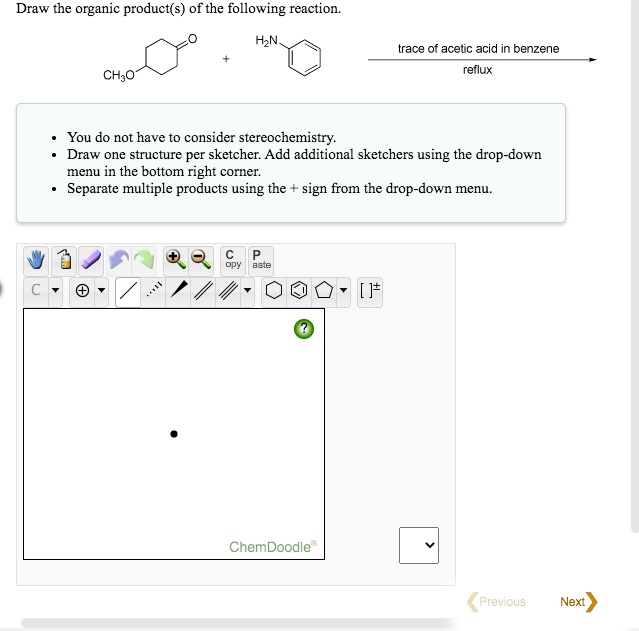
The entire browser would get pasted as a picture. Open Microsoft Paint, and paste it over there by pressing Ctrl V. What I formerly used to (and currently) do: If you want to save that image, I would suggest using the Prnt Scrn button on your computer to save the screen image. How do I add these diagrams to my question?: To draw the arrow, first choose a pair of electrons, and drag towards the site where electrons must be moved.
#How do draw on chemdoodle full#
Movement of pair of electrons are represented by full arrows, while single electron movements are shown by half arrows (fish-hooks). Electron movements are represented by curved arrows. It's very important to draw electronic movements while describing chemical reactions. Reaction arrows are found on the arrows tab.Īll chemical reactions involve movements of electrons. Let's cover a bit of the features ChemDoodle offers to draw mechanisms:

Drawing reaction mechanisms is arguably complicated and varies from reaction to reaction. Never fear, the eraser is here! Click on the pink colored eraser to initiate the erasing tool, and click on bonds or atoms that you want to remove. Help! I drew something accidentally and I can't get rid of it!?! (hollow electrons are used to remove electrons) Then, we can replace the chosen carbon atom with nitrogen here.įinally, on adding the double bonds, pyrrole is done:Īlternatively, a resonance form may also be drawn:Ĭharges on atoms can be added by using the charges tab: To illustrate this, lets consider drawing pyrrole. When incorporated into molecules, they are colored according to the CPK coloring scheme. Heteroatoms are found in the heteroatom section in the toolbar above. Hybrids are shown in the bondĪ pretty good bunch of organic compounds aren't just carbon and hydogen, they also have other atoms with them as well. The resonance hybrids can be shown in this drawing tool although this tool is mainly for explaining reaction mechanisms, and not for explaining the structures themselves. For other aromatic rings, you must draw the aliphatic counterpart and add double bonds to it at desired locations. You can stretch a cyclo-ring from that directly as well.Īlternatively, you can also add rings as substituents to existing chains.īenzene rings are also provided in the rings section. To add a ring, as before, go ahead and drop the initial dot on the interface.

Rings bigger than this are however, aren't given. Once you leave the click button, a $\ce$ bond, we change them to double and triple respectively by clicking in the double bond and triple bond icons, and pressing on the desired bonds.Ĭongratulations! You have successfully drawn your first molecule on ChemDoodle! Now let's see a few other cases:įor adding rings to molecules, go to the rings section, where rings upto cyclooctane are found. Here, since we are making 3-methylpent-1-ene-4-yne, we will click on the single bond symbol, and while holding it, stretch it in the desired direction.

Now that the dot is pressed, this serves as a location around which you can draw bonds or cyclic rings at that point. This dot can be set down on the interface on clicking. You'll see a grey dot following the cursor as well. You would begin drawing this way:įirst, click on the single bond symbol, and then hover over the editor interface. For example, let's say you want to draw 3-methylpent-1-ene-4-yne. So now, let's get familiarized with how this editor works:įirst of all, make sure you have in mind what molecule you want to draw. Did I mention that it's completely free? Open the editor tool by going to. There are quite alot of chemical structure and mechanism drawing tools out there, but I would prefer using the online sketcher provided by ChemDoodle, due to the fact that it's completely online-based, and is quite handy and easy to use.


 0 kommentar(er)
0 kommentar(er)
